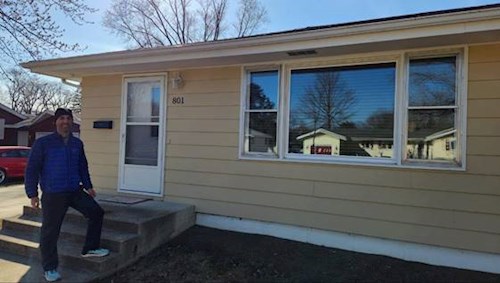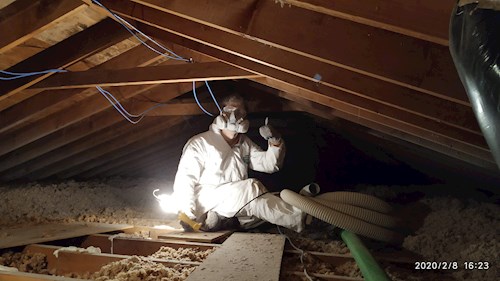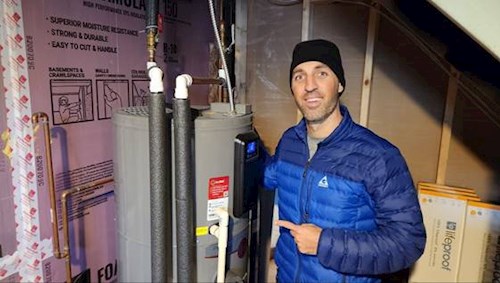

By: Isabella Lubotsky
When searching to buy a new home, what features are you looking for? Hard wood floors, a large backyard, or perhaps a balcony or high ceilings? Have you ever considered factors like indoor air quality, wall insulation, or energy efficiency?
Although home energy efficiency may not be at the top of your wish list for a new house, these investments pay off significantly in the long run. Energy efficient houses have a number of benefits: they are less drafty and more evenly temperature-controlled and therefore more comfortable; they lower your energy cost and maintenance costs; and can improve your health through better air quality and by reducing your vulnerability to heat-related illness.
And even if you’re not currently in the market for a new house, upgrading your existing house is an affordable way to reduce your energy costs while improving your health and home environment.
When Stephen Cavill bought his first home on the east side of Madison in 2019, he moved in expecting to make improvements. When purchased, his ranch style house used a single stage natural gas furnace, a two ton air conditioner, an electric resistance water heater, had no insulation, and lacked air sealing throughout his house. Seeing these issues, Stephen took it upon himself to make all the upgrades he could (by himself!), with the goal of increasing energy efficiency and reducing utility costs.

Stephen’s first step to insulate and air seal his attic, basement, and exterior walls. He also redid his ductwork and replaced about 15 windows in the main levels and basement. After making these improvements, he found when he went to upgrade his furnace that he could downsize its capacity due to the reduced heating and cooling needs from his insulation and air sealing work. He was able to then replace his single stage furnace with a cold-climate heat pump and replaced his water heater with a heat pump water heater.
Heat pumps work more efficiently than traditional systems like furnaces, boilers, and central air conditioners, which means they produce fewer emissions and can save you money on your utility bills. Heat pumps differ from furnaces in that they don’t create heat. Instead, they move heat in and out of the home, making them like a two-in-one heater and air conditioner. And because they operate by moving air around your house, all areas are more evenly heated or cooled, which translates to a more comfortable living space than traditional systems.

With these updates, Stephen’s home is now all-electric. And with the insulation and air sealing upgrades, Stephen’s electric bill for his 2,000 sq ft house is now always under $200 per month, and he was able to completely disconnect from the natural gas line.
Next up for Stephen is to see if his house is conducive to installing solar and lowering his carbon footprint even more!
Now that he went through the process of making energy efficiency upgrades to his own home, Stephen is on a mission to help educate and empower other homeowners to do the same, through his home energy audit business Madison Home Performance. Prior to purchasing his house though, Stephen had no experience with energy efficiency upgrades. Learning by watching Youtube videos, reading, and much trial and error, Stephen believes that “if I can do it, anyone can”.
Stephen’s advice? Start with a home energy assessment to get a holistic view of the energy ecosystem of your house. The assessment will reveal the areas for the greatest energy efficiency improvements and greatest potential energy savings. Then you can make a plan for how to prioritize making those upgrades over a number of years.
And now is a great time to get started. Through the Inflation Reduction Act, you can receive up to $1,200 per year in tax credits for energy efficiency home improvements from the Inflation Reduction Act, including insulation (up to $1,200), exterior doors (up to $500), windows (up to $500), electrical panels (up to $600), and energy audits (up to $150). Learn more about these tax credits and ways that you can make a difference within your own home.